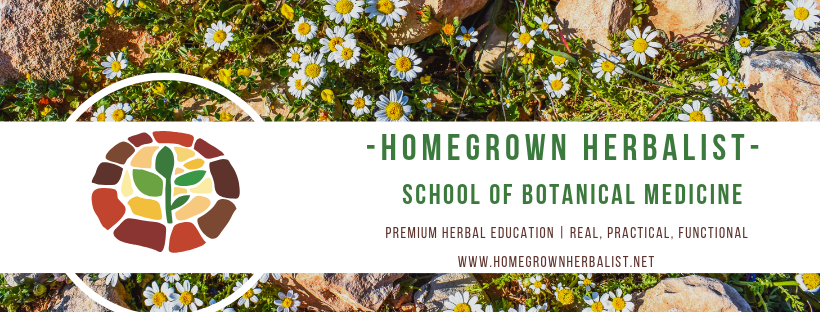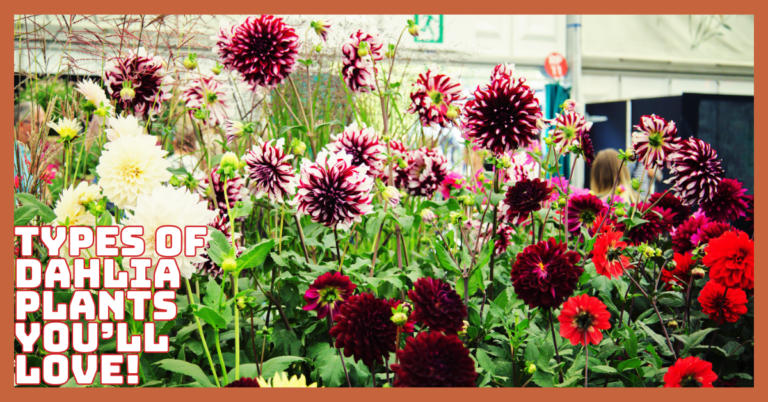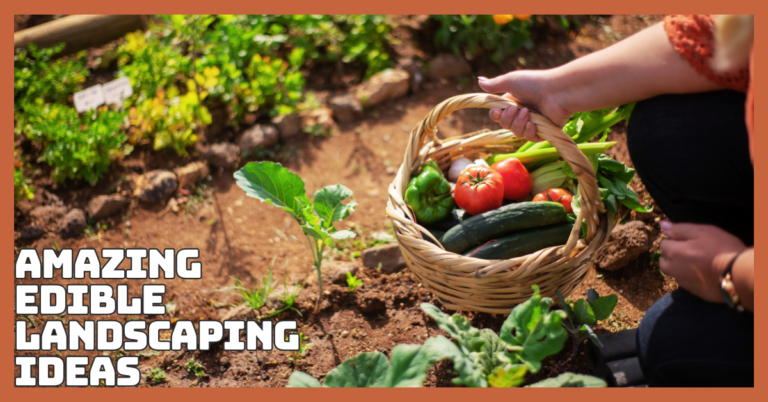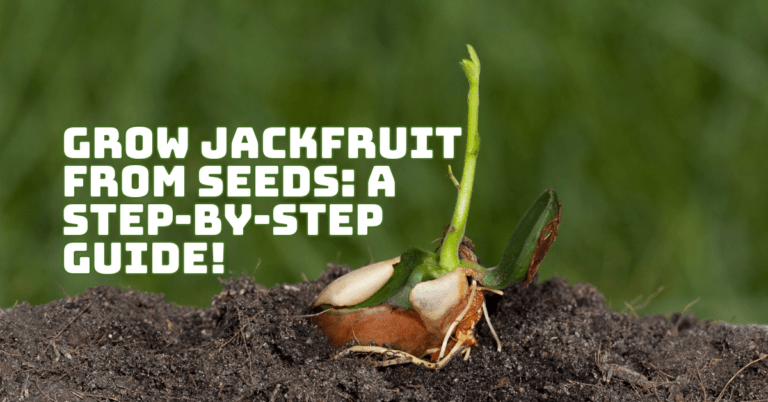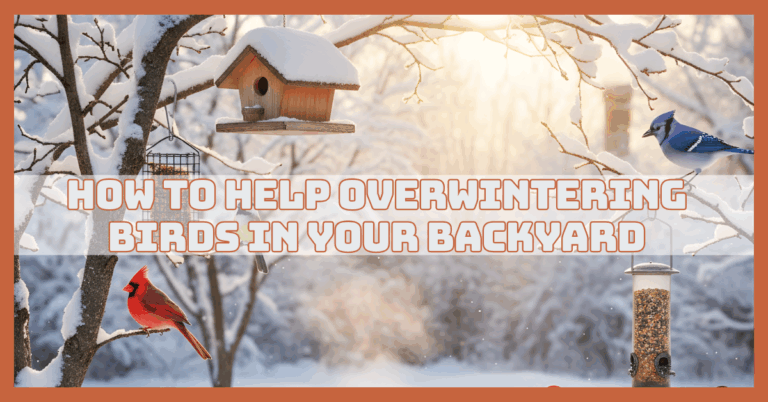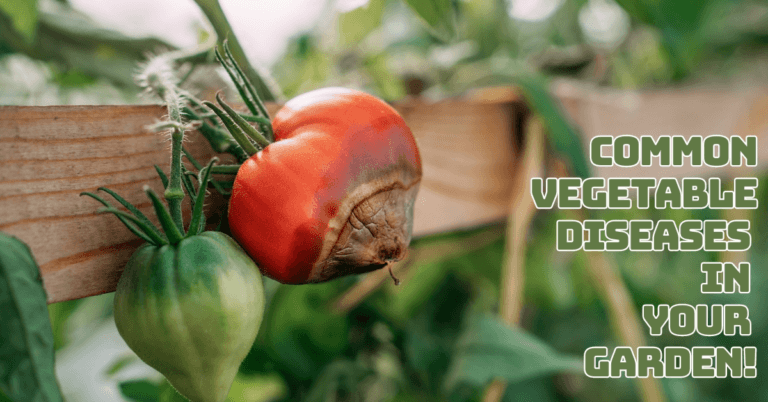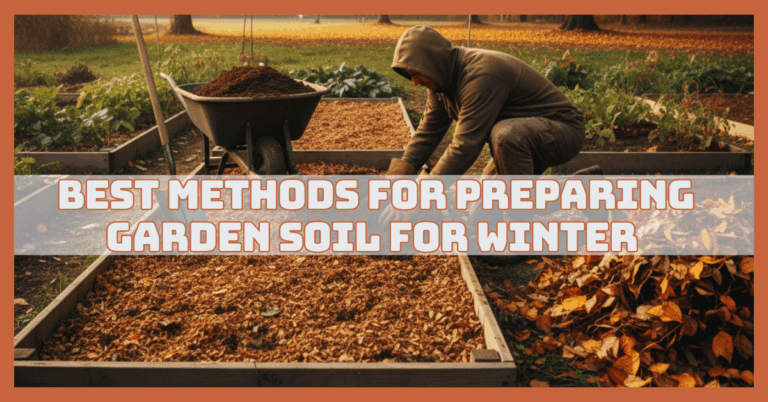Ultimate Guide To Natural Garden Pest Control
Ultimate Guide To Natural Garden Pest Control
Looking for effective ways to protect your plants without harsh chemicals?
This ultimate guide to natural garden pest control is here to help you create a healthy, thriving garden the eco-friendly way.
From homemade remedies to helpful garden allies, discover safe and sustainable methods to keep pests at bay. Whether you are a beginner or a seasoned gardener, these natural solutions will make your green space bloom beautifully.
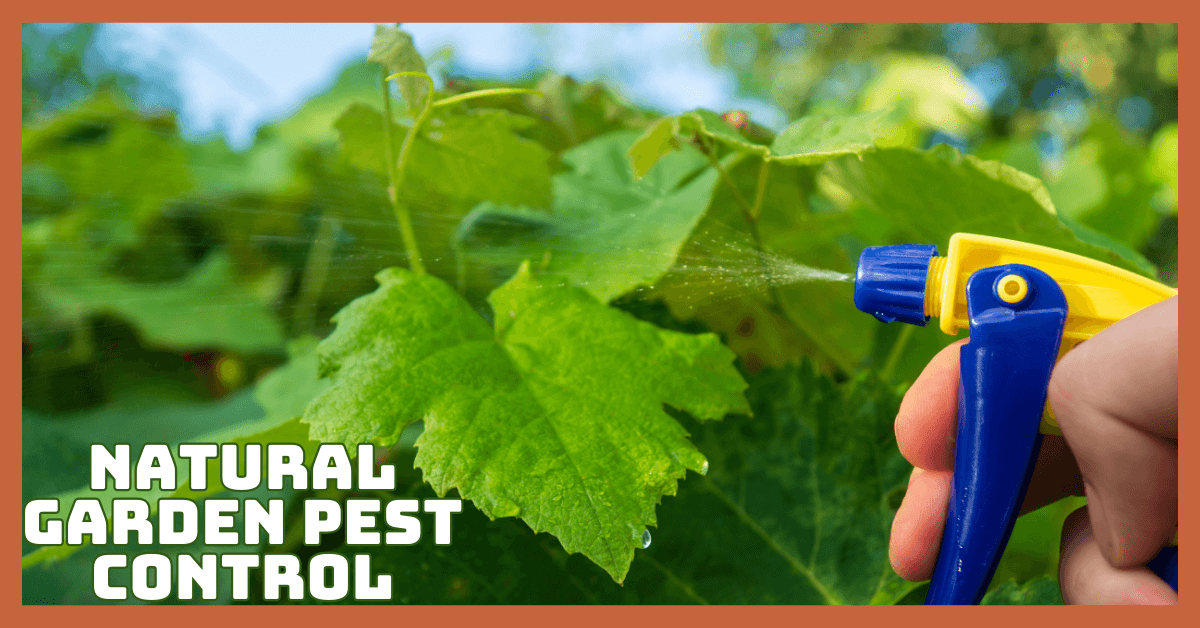
The Benefits Of Natural Garden Pest Control
Natural pest control uses sustainable pest management methods to promote a healthy, eco-friendly garden. These methods protect both your plants and the planet without harsh chemicals.
1. Protects The Environment
Chemical pesticides can seep into the soil, contaminate water sources, and harm wildlife. Natural pest control methods, like companion planting or introducing beneficial insects, eliminate this risk. By choosing eco-friendly solutions, you’re reducing your environmental footprint and contributing to a healthier planet.
2. Keeps Your Garden Safe For All
Say goodbye to worrying about toxic residues on your herbs, fruits, and vegetables. Natural pest control ensures your garden is safe for your family, pets, birds, and bees. You can eat fresh vegetables from your garden without worrying about harmful additives.
3. Supports Beneficial Insects
Not all insects are harmful—many play essential roles in pollination and pest control. Ladybugs, lacewings, and bees thrive in gardens using natural methods.
Avoiding chemicals creates a balanced ecosystem where these helpful creatures flourish, naturally keeping harmful pests in check without disruption.
4. Boosts Soil Health
Chemical pesticides degrade soil quality, harming beneficial microorganisms essential for fertility. Natural methods like composting, mulch, and organic sprays nourish the soil, preserving its structure and nutrients.
This approach ensures long-term productivity, allowing plants to grow stronger while maintaining a rich, vibrant, and biologically active growing environment.
5. Cost-Effective And DIY-Friendly
Natural pest control is budget-friendly and accessible, using inexpensive or homemade solutions. From garlic spray to companion planting with marigolds, these methods require minimal investment.
Many solutions use everyday household items, making it easy to protect your garden while embracing sustainable, cost-effective, and environmentally friendly practices.
6. Promotes Biodiversity
A chemical-free garden supports diverse plant and animal life, fostering a balanced ecosystem. Avoiding pesticides creates a sanctuary where beneficial insects, birds, and pollinators thrive.
This organic balance promotes plant development, improves soil health, and makes your garden area more vibrant.
7. Long-Term Sustainability
Natural pest control is a lasting solution that nurtures a self-sustaining environment. By embracing nature’s balance, your garden becomes resilient against pests and diseases without chemical reliance.
Over time, enriched soil, more vigorous plants, and thriving wildlife contribute to a healthier, more productive, and enduring garden ecosystem.
8. Healthier And Stronger Plants
Plants cultivated in a chemical-free environment develop resilient natural defenses, making them less susceptible to pests and diseases.
This results in a more vigorous, productive garden with thriving crops, vibrant flowers, and enriched soil, promoting long-term sustainability and ecological balance for healthier plant growth.
9. Peace Of Mind
Growing a garden free from harmful chemicals offers more than just reassurance. It provides peace of mind. You can rest easy, knowing your plants, soil, and local ecosystem remain unharmed.
This conscious choice fosters sustainability, benefiting both nature and your well-being. The satisfaction of nurturing a toxin-free, life-supporting space enhances your gardening experience with lasting rewards.
10. Aesthetic And Therapeutic Benefits
Natural pest control encourages planting vibrant flowers, aromatic herbs, and diverse companion plants, enhancing your garden’s visual appeal.
This approach creates a harmonious, colorful space while fostering relaxation. Gardening is therapeutic, reducing stress, improving mood, and deepening your connection with nature’s calming presence.
Common Garden Pests
1. Aphids
Tiny, soft-bodied insects called aphids gather on plant stems and leaves, draining the sap and weakening the plant. They can cause distorted growth, yellowing, and curled leaves.
Aphids multiply rapidly and may spread plant diseases. To control them, use neem oil or insecticidal soap, or promote natural predators like ladybugs and lacewings to keep populations low.
2. Caterpillars
Caterpillars, including cabbage worms and tomato hornworms, are the larval stage of moths and butterflies. They chew large holes in leaves, flowers, and fruits, sometimes causing significant damage quickly.
Handpicking works well, and introducing birds or applying Bt (Bacillus thuringiensis), a natural bacterial insecticide, can help control them without harming beneficial insects.
3. Slugs & Snails
These slimy pests feed at night and during damp conditions, munching on seedlings, leaves, and fruit. They leave behind irregular holes and a shiny trail of mucus.
Slugs and snails thrive in moist areas and hide during the day. To reduce their impact, use beer traps, diatomaceous earth, copper barriers, or hand removal in the evening.
4. Whiteflies
The tiny, white, flying insects known as whiteflies feed on the undersides of leaves, drawing sap from them and resulting in leaf drop and yellowing.
They excrete honeydew, which attracts sooty mold. These pests thrive in warm climates and greenhouses. Monitor and manage them with yellow sticky traps, and decrease infestations with insecticidal soap or neem oil.
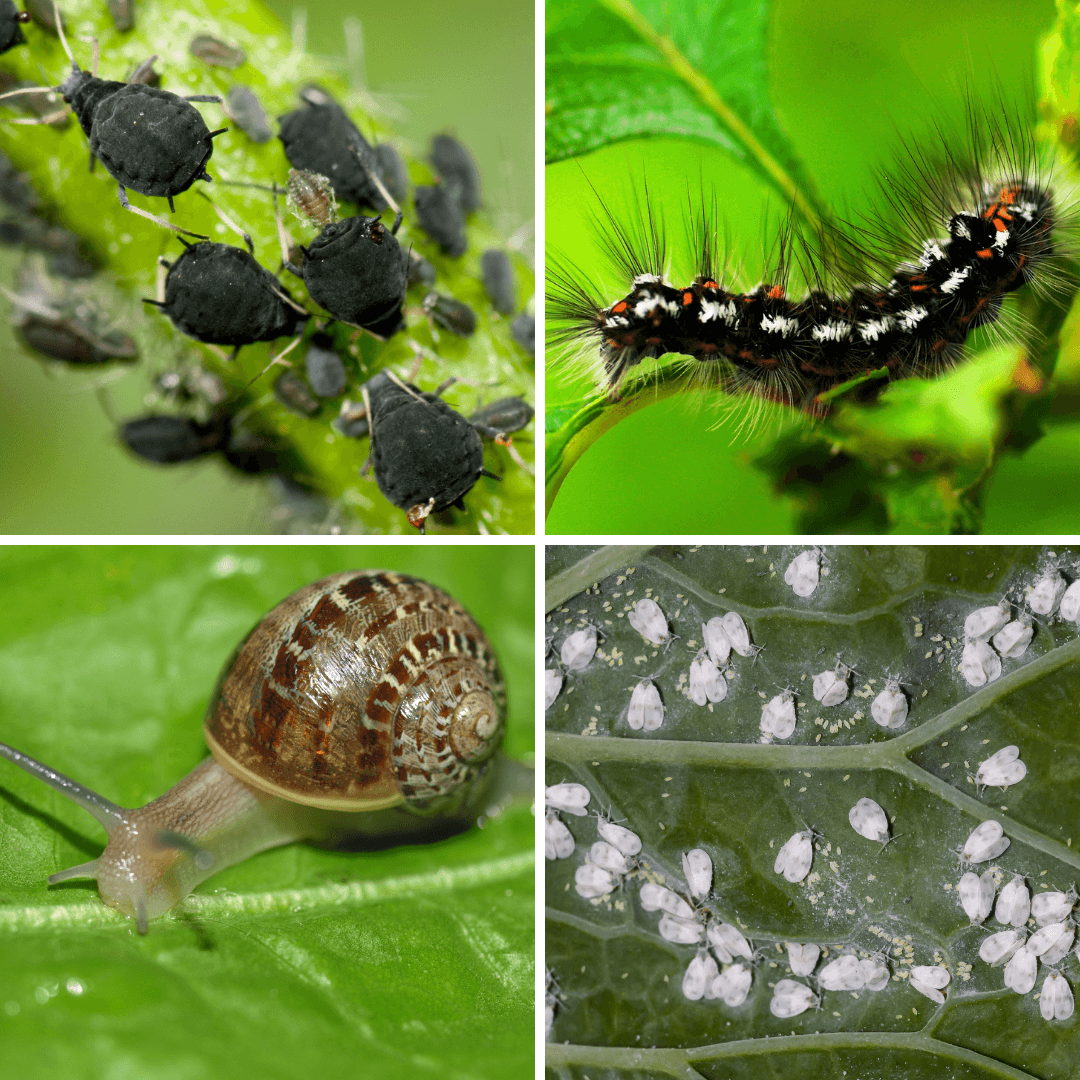
5. Spider Mites
Spider mites are minuscule arachnids that puncture plant cells to feed. They often leave yellow speckling or stippling on leaves, and heavy infestations produce fine webbing.
They can swiftly harm plants and do well in hot, dry conditions. To loosen them, use horticultural oils or neem and mist plants with water for long-term control.
6. Flea Beetles
Flea beetles are small, shiny beetles that jump when disturbed. They chew small, round holes in leaves, primarily affecting young seedlings. Heavy infestations can stunt plant growth or kill seedlings.
To manage them, use floating row covers early in the season, sprinkle diatomaceous earth around plants, and apply neem oil as a deterrent spray.
7. Cutworms
Cutworms are the larvae of moths that hide in the soil and come out at night to chew through plant stems at ground level, often killing seedlings in one bite.
They can devastate a young garden overnight. Protect seedlings with cardboard collars, till soil before planting to expose larvae, and keep garden beds weed-free to reduce habitat.
8. Japanese Beetles
Japanese beetles are metallic green beetles that feed on over 300 plant species. They consume the tissue between veins to skeletonize leaves.
Their grubs also damage lawns by feeding on roots. To control them, handpick beetles in the morning, use pheromone traps cautiously, and treat soil for grubs if needed. Neem oil can reduce feeding activity.
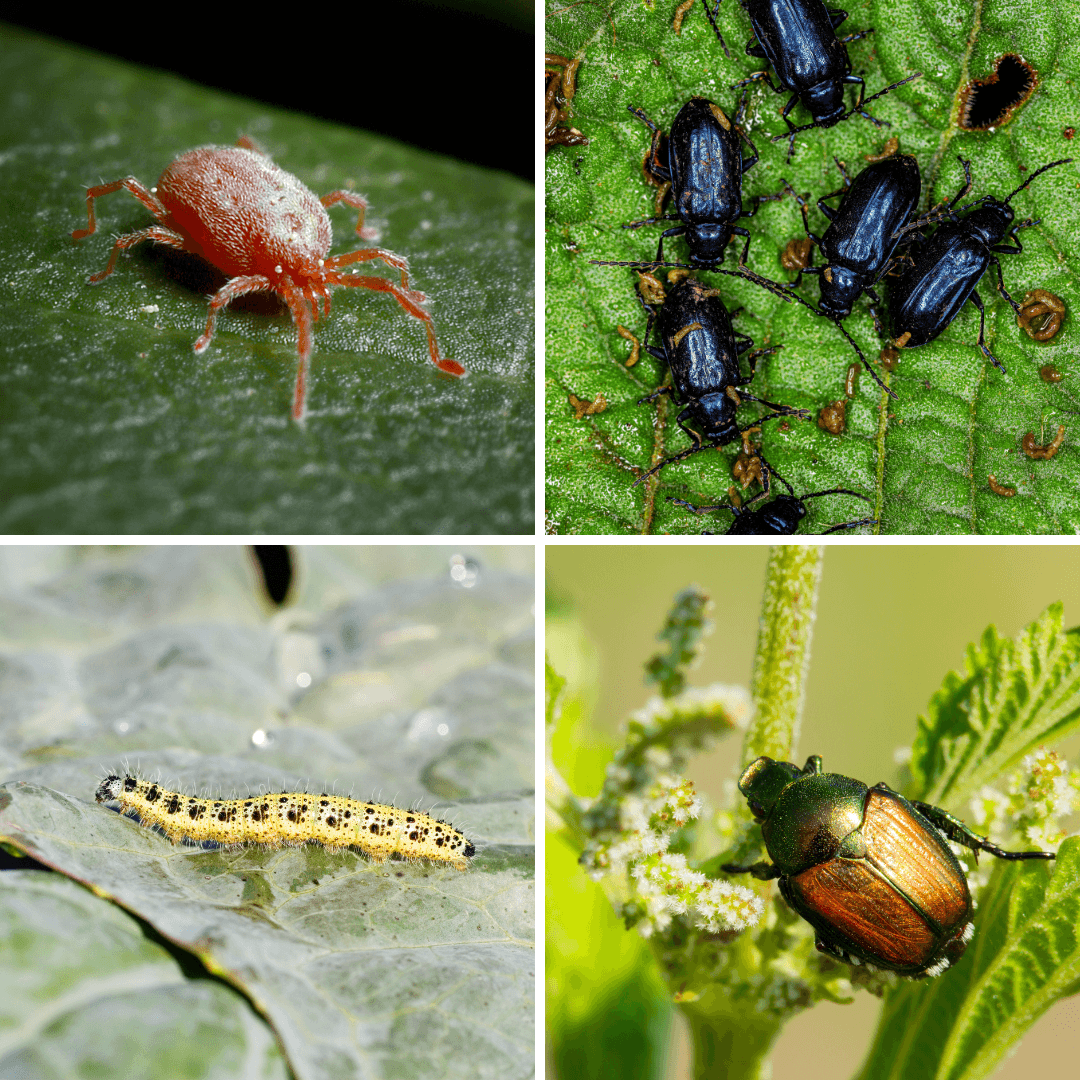
9. Squash Bugs
Squash bugs target squash, zucchini, pumpkins, and other cucurbits. They cause wilting, drying out, and death by sucking sap from leaves.
Eggs are often found on the undersides of leaves in clusters. Remove eggs manually, use row covers early in the season, and apply insecticidal soap or neem oil before populations get out of control.
10. Earwigs
Earwigs are nocturnal insects with pincers that can feed on both dead and living plant material. While they help break down organic matter, they can also chew holes in leaves, flowers, and soft fruits.
Trap them using rolled-up damp newspapers or shallow containers filled with oil. Keeping the garden dry and tidy also helps deter them.
11. Mealybugs
Mealybugs are soft-bodied insects covered in white, cotton-like wax. They produce sticky honeydew and suck plant sap, which promotes the formation of mold.
Infestations cause yellowing and stunted growth. They often hide in leaf joints. Wipe them off with alcohol-dipped cotton swabs, apply neem oil, or introduce predatory insects like ladybugs or lacewings for natural control.
12. Thrips
Thrips are tiny, slender insects that feed by puncturing plant tissue and sucking out cell contents, leaving silver streaks and distorted growth.
They spread plant viruses and are hard to spot without close inspection. Control them using blue sticky traps, neem oil, or insecticidal soap. Removing weeds and keeping the garden clean helps prevent infestations.
13. Leaf Miners
Leaf miners are larvae of various insects that burrow into leaves and feed between the upper and lower surfaces, leaving winding, whitish trails.
Damage weakens plants and affects photosynthesis—control by removing and destroying affected leaves. Floating row covers can prevent adult insects from laying eggs, and neem oil can disrupt larval development.
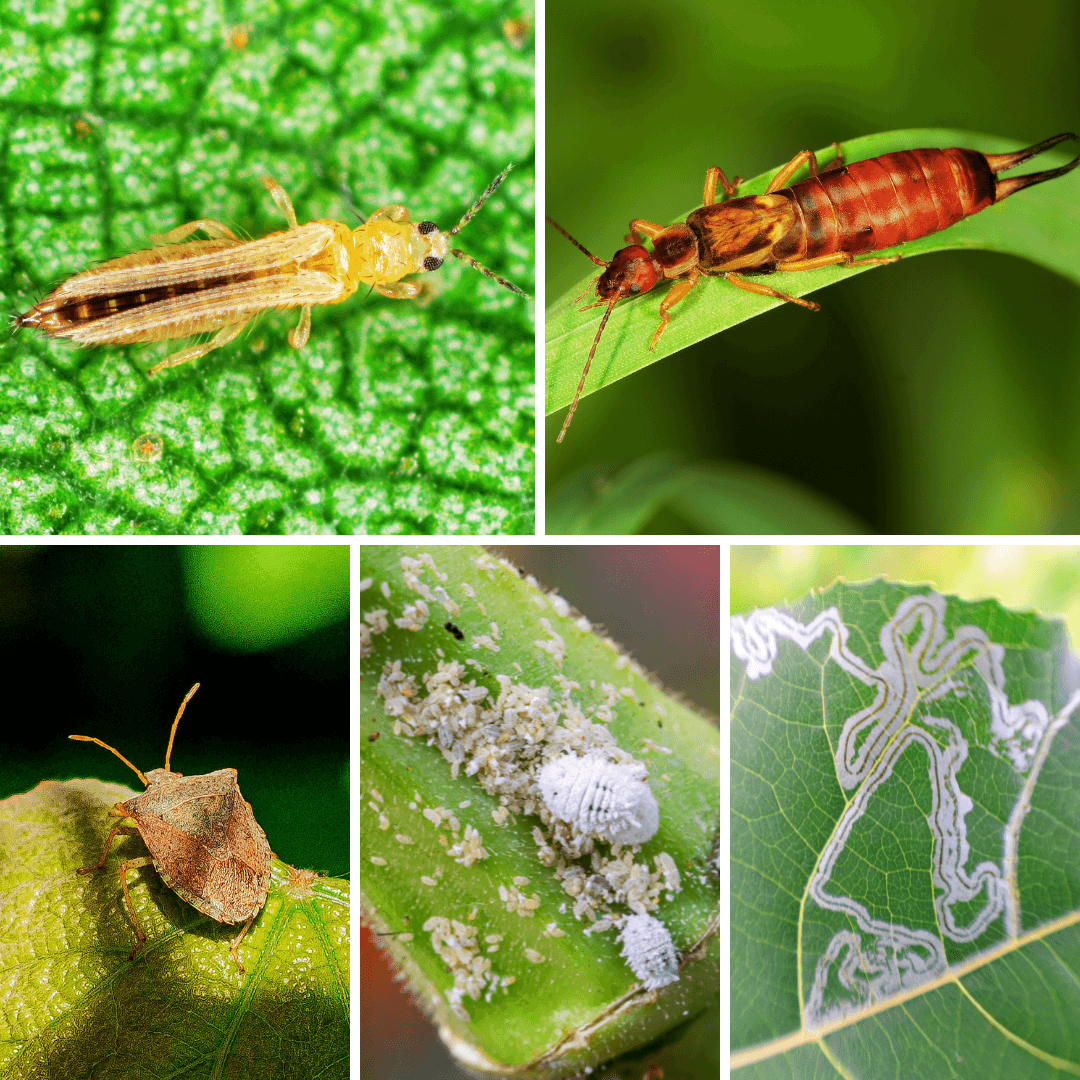
Natural Pest Control Methods
1. Physical Barriers And Traps
Physical barriers are a good approach to keep pests away from plants.
1. Row Covers
Lightweight textiles known as row coverings serve as protective barriers that keep pests like cabbage worms, flea beetles, and aphids from getting to plants.
They are especially effective for leafy greens like lettuce, kale, and spinach. These covers allow sunlight and rain to pass through, promoting healthy growth while protecting crops from pests.
2. Copper Tape
Copper tape is an eco-friendly solution for deterring slugs and snails from feasting on plants. When placed around plant beds or pots, the copper creates a mild electric charge that irritates these pests, preventing them from crossing it. This method works well for garden tender plants like hostas, strawberries, and vegetables.
3. Sticky Traps
Aphids, fungus gnats, and whiteflies are among the flying insects caught using sticky traps.
The traps' bright yellow color attracts these pests, while their sticky surface traps them. Place these traps near affected plants like tomatoes, peppers, and herbs to reduce insect populations and prevent crop damage.
4. Beer Traps
Beer traps are a natural solution for slugs and snails. When a shallow dish of beer is in the garden, these pests are drawn to the scent and drown in the liquid. This technique works exceptionally well for slug-damaged plants, including lettuce, cabbage, and soft-leaved crops.
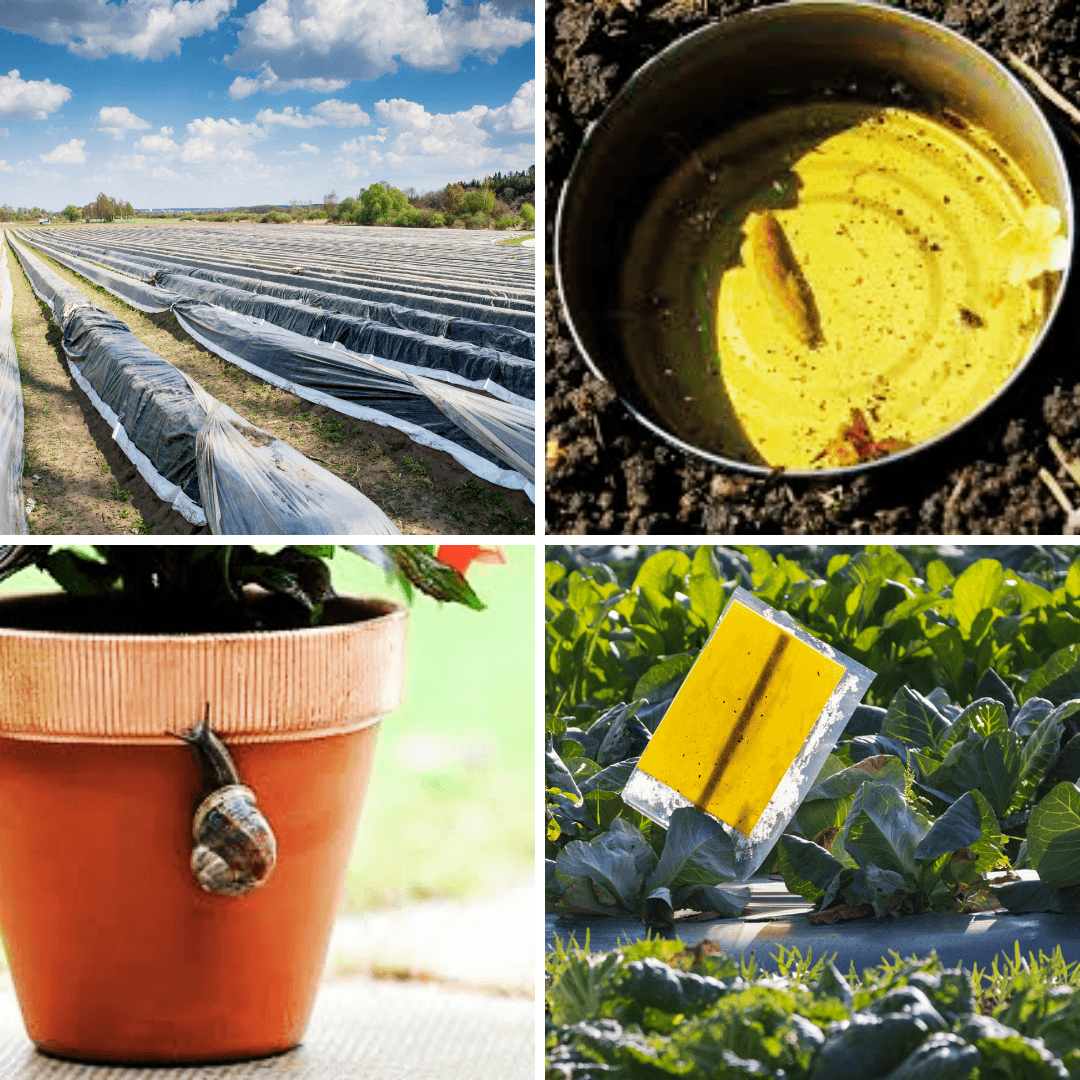
2. Natural Sprays And Solutions
Organic sprays can effectively deter pests without harming beneficial insects.
1. Neem Oil Spray
Neem oil is an organic insecticide that targets pests like aphids, whiteflies, caterpillars, and mealybugs. It disrupts their growth, feeding, and reproduction, making it practical for plants like tomatoes, peppers, and eggplants. Apply protect plants without harming beneficial insects. to protect plants without harming beneficial insects
2. Soap And Water Spray
A basic water and mild soap solution can successfully manage aphids, spider mites, and whiteflies. This solution suffocates pests without harming plants.
Use it on crops vulnerable to these pests, such as lettuce, kale, and cucumbers. Ensure the soap is gentle to avoid plant damage.
3. Garlic And Chilli Spray
Garlic and chilli spray is a natural repellent that keeps chewing insects like caterpillars, beetles, and aphids away. It works well for plants such as cabbage, broccoli, and spinach, which are commonly attacked by these pests. The pungent smell and compounds in garlic and chili irritate pests, deterring them from feeding.
4. Vinegar Solution
A diluted vinegar solution is helpful for repelling ants and certain beetles. It is especially effective around plant beds and pathways where ants or beetles are problematic.
Use this method on plants like strawberries and peppers, which attract ants. Be cautious not to spray directly on sensitive plants.
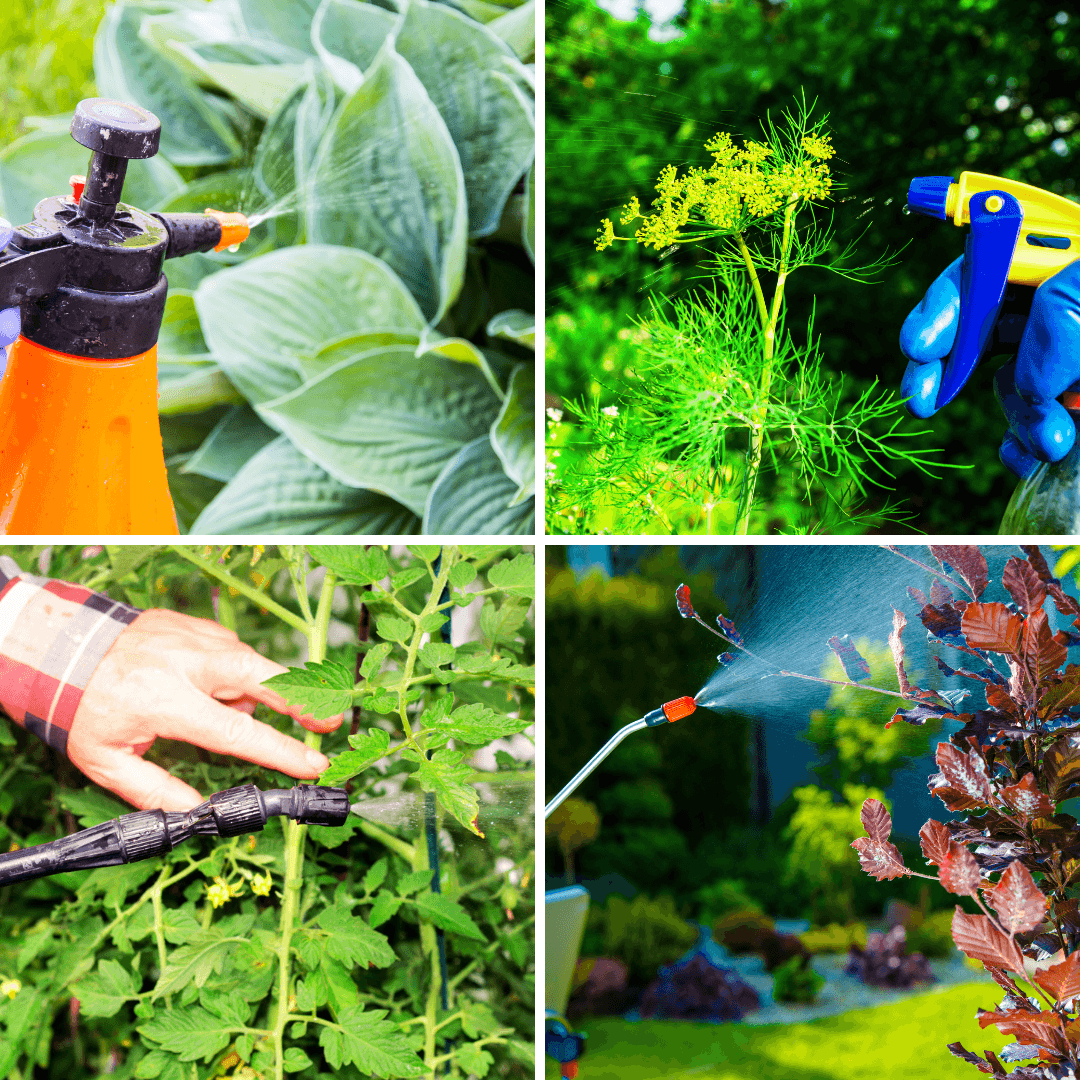
3. Organic Mulches
Mulching helps retain soil moisture while preventing pest infestations.
1. Straw Mulch
Straw mulch helps retain soil moisture and prevents pests like cutworms, which target seedlings and young plants. It is particularly effective for tomatoes, peppers, and cabbage.
The straw layer creates a physical barrier that limits the movement of pests while promoting healthy soil conditions for plant growth.
2. Cedar Chips
Cedar chips naturally ward off pests such as ants, moths, and beetles, which often infest lettuce, carrots, and cabbage.
The aromatic oils in cedar help keep these insects away while providing the additional benefit of moisture retention and weed suppression around your garden beds.
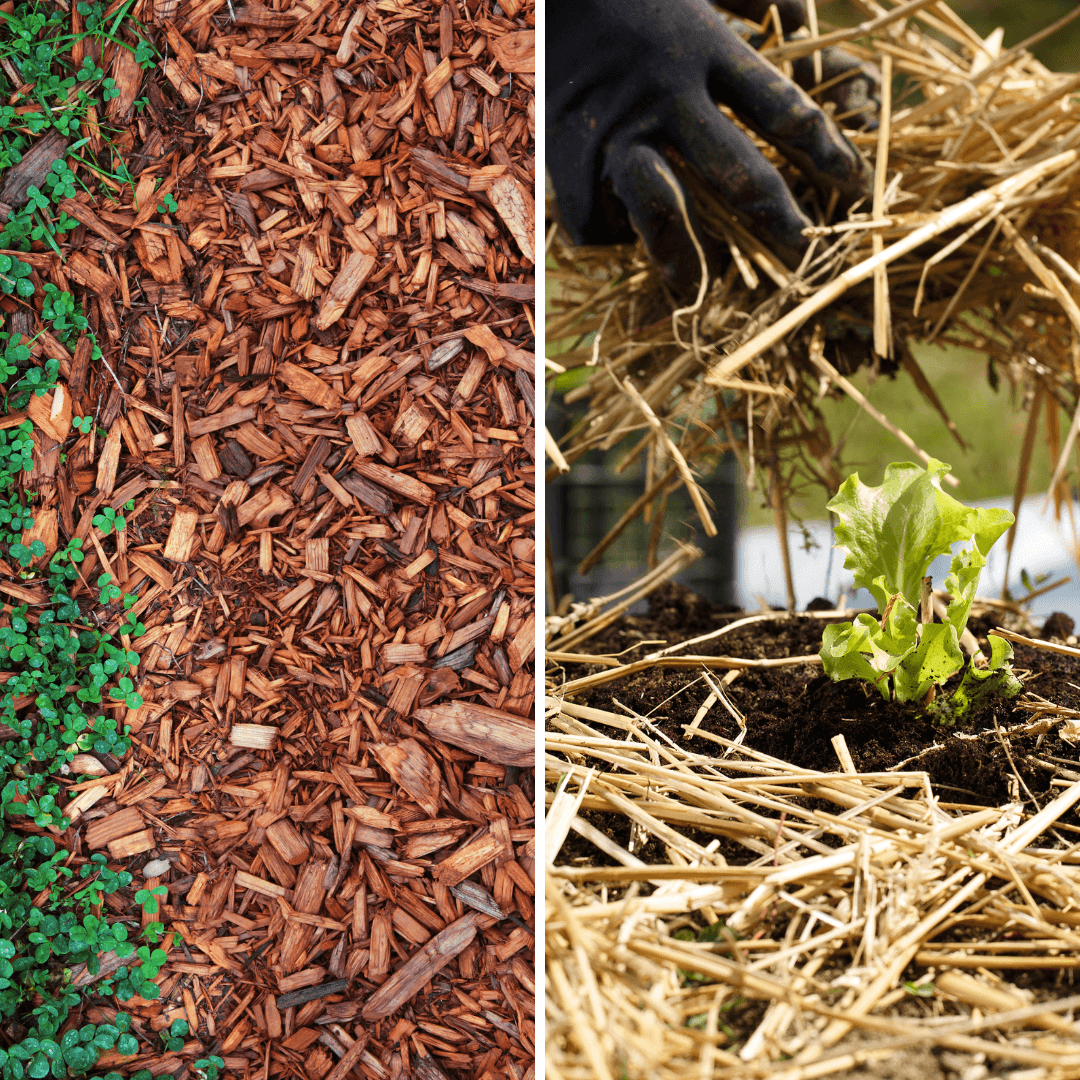
4. Handpicking And Manual Removal
Manually removing pests can be a simple yet effective method for smaller gardens.
1. Handpicking Beetles And Caterpillars
Handpicking beetles and caterpillars from your plants is a simple but effective method for controlling pests in smaller gardens.
Pick off pests like Japanese beetles or caterpillars and drop them into soapy water to eliminate them. Plants that attract these pests, such as tomatoes, cabbage, and beans, respond well to this technique.
2. Removing Infested Leaves
Removing infested leaves is another manual method to prevent pests from spreading. If plants like roses or beans are affected by aphids or caterpillars, carefully prune the damaged leaves. This helps stop pests from reproducing and keeps the infestation from spreading to healthy areas of your garden.
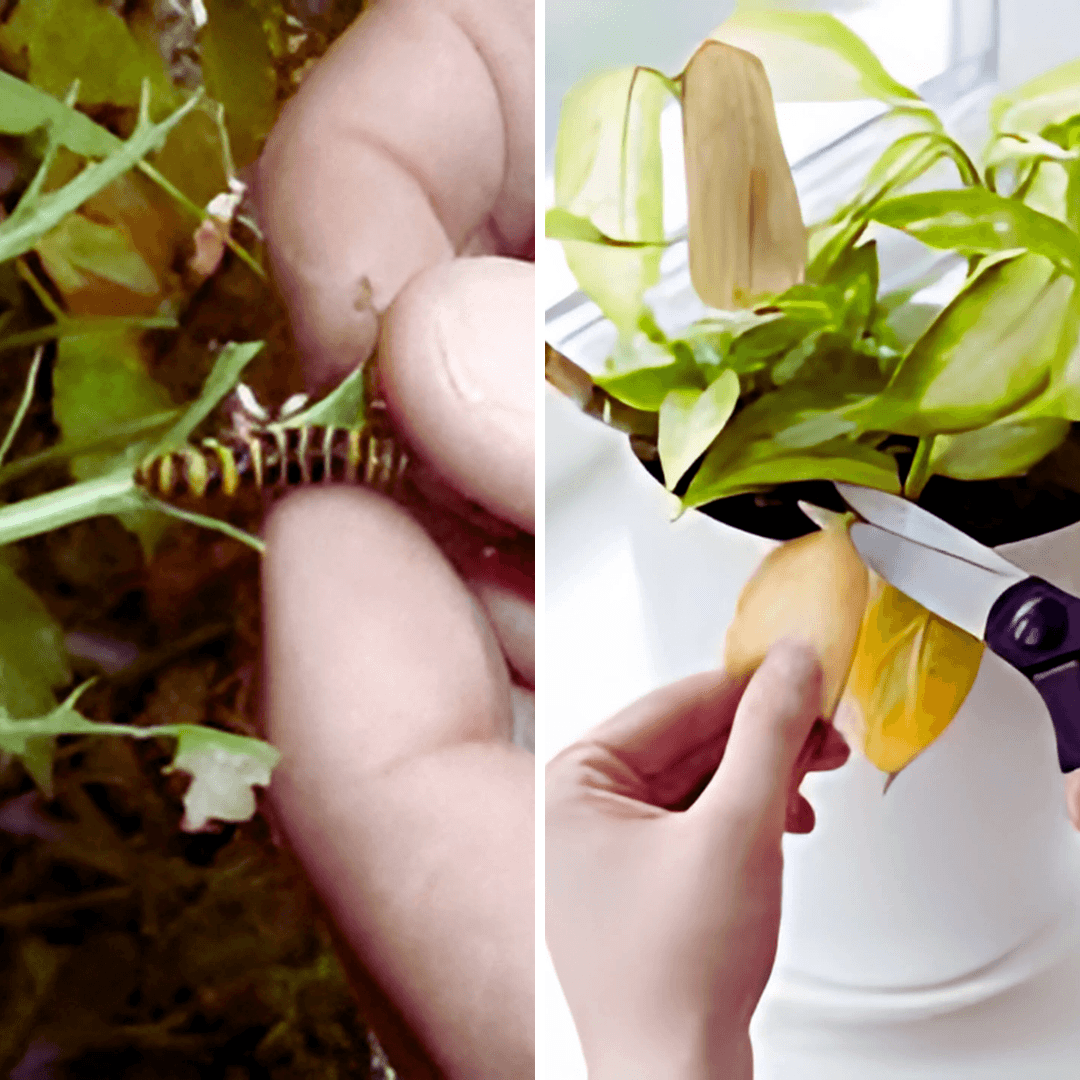
Seasonal Tips For Natural Pest Control
Spring
Many pests emerge from dormancy in spring. Start by cleaning up any dead plant material that may harbor insects. Introduce helpful insects such as ladybugs and lacewings early in the season, and use floating row coverings to protect young seedlings. This helps get a head start on pest management.
Summer
As temperatures rise, pest populations can explode. Water your garden in the early morning to avoid fungal issues, and watch out for aphids and spider mites. Use neem oil or insecticidal soap in the evenings when pollinators are less active to safely target pests without harming bees.
Fall
To avoid pests the following year, you should prepare your garden for winter in the fall. Remove spent plants and compost healthy material. Avoid leaving pest-infested debris in the garden. To improve soil health and break the cycles of insect breeding, you can also plant cover crops like rye or clover.
Winter
Although plant growth slows, winter is a great time to plan and prepare. Clean tools and containers to prevent disease spread, inspect stored bulbs and tubers for pests, and set up physical barriers like copper tape for slugs. Begin soil amendments to strengthen your spring garden.
Common Natural Pest Control Mistakes To Avoid
When using natural pest control methods, it’s essential to be mindful of inevitable mistakes that can reduce their effectiveness. Here are some common mistakes to avoid:
1. Overusing Homemade Remedies
While homemade solutions like vinegar, garlic sprays, or diatomaceous earth are effective, overuse can harm your plants or soil.
Excessive application of even natural products can disrupt the balance of your garden, potentially harming beneficial insects or damaging plant roots. Always test and monitor carefully.
2. Ignoring Beneficial Insects
Beneficial insects such as ladybugs, lacewings, and bees control pests and pollinate plants. Using pesticides, even natural ones, can unintentionally harm these essential creatures.
Avoid disrupting their habitat and use pest control methods that target harmful pests without negatively affecting the beneficial insect population.
3. Not Targeting The Root Cause
Focusing only on visible pests without addressing underlying issues like plant stress or poor soil health won’t provide lasting results. Improving plant care, irrigation, and soil conditions can help avoid future infestations and lessen the need for pest control treatments because pests frequently flourish in poor habitats.
4. Relying On A Single Control Method
Depending on just one natural method, like neem oil, may not fully address your pest problem. Pests can develop resistance, so mixing techniques, such as companion planting, physical barriers, and attracting natural predators, are essential to effectively controlling and preventing infestations in your garden.
5. Using Too Much Water
Overwatering creates a damp environment where pests like slugs, snails, and fungal diseases thrive. Excess moisture encourages these pests to flourish and can also lead to root rot or mould. Ensure your plants are adequately watered, promoting healthy growth and reducing the likelihood of pest issues.
6. Not Practicing Regular Maintenance
Neglecting dead plant matter, weeds, and decaying organic material can attract pests that hide and breed in these areas.
Regular garden upkeep, like pruning and cleaning, reduces the available habitat for harmful pests while maintaining overall plant health and creating a cleaner environment for beneficial insects.
7. Misidentifying Pests
Incorrectly identifying pests can lead to ineffective treatments and wasted effort. Different pests require different control methods, so accurately diagnosing the problem is essential.
Misidentification may cause you to apply the wrong solution, potentially damaging your plants and allowing the pest population to grow unchecked.
Conclusion
Natural garden pest control can be practical and rewarding with the proper techniques and patience. By choosing eco-friendly methods, you protect your plants and support a healthier environment.
Embrace the power of nature and enjoy a vibrant, pest-free garden naturally. Ready to get started? Your garden—and the planet—will thank you for it.
I trust you enjoyed this article on the Ultimate Guide To Natural Garden Pest Control. Please stay tuned for more blog posts soon. Take care!
JeannetteZ
>>>Please click here to read my all-inclusive article, About The Essential Companion Planting Guide<<<
>>>Please click here to read my all-inclusive article about Container Gardening<<<
>>>Are you interested in homegrown herbs and medicine? Please click here to find out more about it!<<<
Your Opinion Is Important To Me
Do you have thoughts, ideas, or questions? I would love to hear from you. Please leave me your questions, experiences, and remarks about this article on the Ultimate Guide To Natural Garden Pest Control in the comments section below. You can also email me at Jeannette@Close-To-Nature.org.
Disclosure
This post may contain affiliate links. As an Amazon Associate and other affiliate programs, I earn from qualifying purchases at no extra cost to you. Please read my full affiliate disclosure.
You might also enjoy these blog posts:
Best Home Remedies For Headaches
Best Summer Flowers To Grow For A Vibrant Garden
Types Of Bulbs To Plant For A Gorgeous Garden
Fast-Growing Plant Seeds For A Thriving Garden
Best Summer Vegetables To Grow For A Thriving Garden

